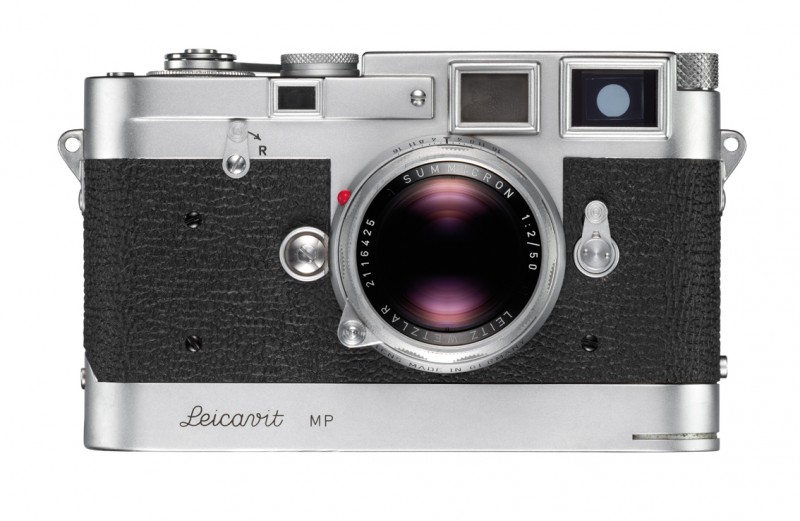MP 1956-1957
MP 1956-1957
February 26, 2014

Leica MP silver with Leicavit and Summicron 2/50 mm
© Leica Camera AG
In 1956, Leica released their first special-edition M onto the market – the Leica MP, specifically designed for reportage photography. Based on the M3 (with identical viewfinder and camera body), the MP also already offered many of the technical specifications subsequently found in the M2, which would be introduced two years later in 1958. The M2 marked the first time that the MP's shutter control was produced on a large scale.
Most notable on the Leica MP were its two winding mechanisms, which work independently from each other: alongside the standard rapid winding lever on the top plate, the camera also offered the bottom-mounted Leicavit MP trigger winder, making it particularly suitable for reportage photography. The Leicavit MP had already been available as an optional feature for older screw-mount Leicas. While it was never featured on the M3, the Leicavit winder later became available for the M2.
Only around 450 models of the Leica MP – referred to as the Original MP – were ever produced, all of which were sold exclusively to professional photographers. Among the best-known owners of a Leica MP was Thomas Hoepker, renowned for his legendary reportage on Muhammad Ali. Yet Hoepker's perhaps most famous image was created on 11 September 2001, capturing a group of young New Yorkers relaxing in the sun by the East River, against the backdrop of the burning Twin Towers.
Most notable on the Leica MP were its two winding mechanisms, which work independently from each other: alongside the standard rapid winding lever on the top plate, the camera also offered the bottom-mounted Leicavit MP trigger winder, making it particularly suitable for reportage photography. The Leicavit MP had already been available as an optional feature for older screw-mount Leicas. While it was never featured on the M3, the Leicavit winder later became available for the M2.
Only around 450 models of the Leica MP – referred to as the Original MP – were ever produced, all of which were sold exclusively to professional photographers. Among the best-known owners of a Leica MP was Thomas Hoepker, renowned for his legendary reportage on Muhammad Ali. Yet Hoepker's perhaps most famous image was created on 11 September 2001, capturing a group of young New Yorkers relaxing in the sun by the East River, against the backdrop of the burning Twin Towers.

Leica MP silver with Leicavit and Summicron 2/50 mm
© Leica Camera AG